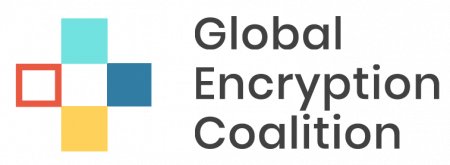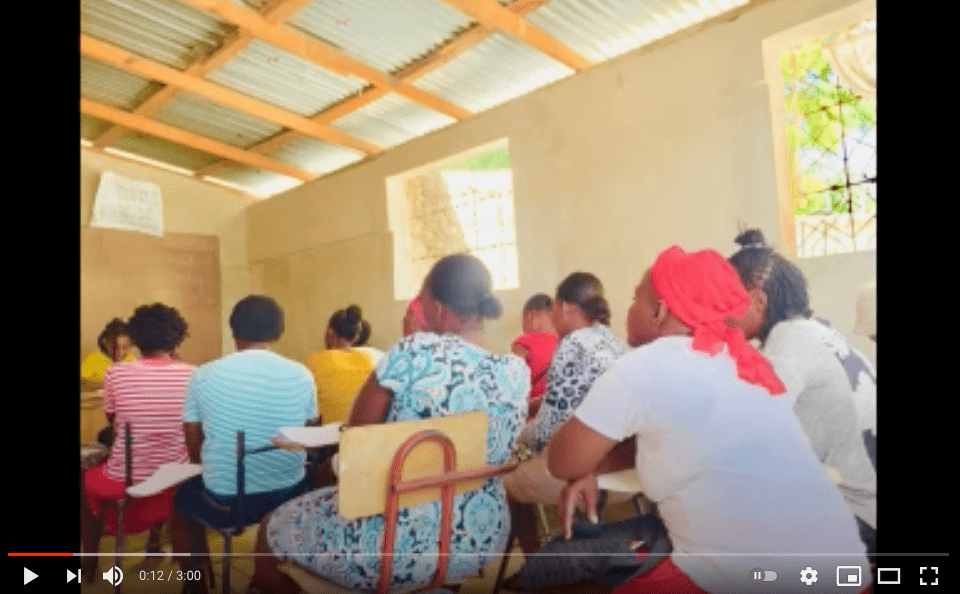2020 Impact Report
The Internet Is a Lifeline
Try to imagine living through 2020 without the Internet.
Medical researchers, loved ones, and even work acquaintances would have been hard to reach, or even worse, cut off. There would have been a total stop to education, with young people losing a crucial year. Our society would have been faced with a terrible choice between economic or medical collapse. The Internet did not make everything perfect. This year has shown us that nothing could. But without it, we would have fared much worse. The Internet is a force for good in society, for sure.
At the start of 2020, the Internet Society reaffirmed our goals for the Internet to be open, globally-connected, secure, and trustworthy. In service of those goals, we committed to our Action Planhttps://www.internetsociety.org/action-plan/2020/.
This Impact Report shows what we have achieved together. When the pandemic hit, the whole Internet Society responded to the challenge. From the Smart Mom program developed by our Haiti Chapter, to the changes that Loretta Odame in Ghana made to improve her online security; from improvement of digital literacy in Yemen, to the chapters who made their websites more accessible and reliable – all these activities show how, by working together in the Internet Way, we can make sure the Internet is for everyone. I find it inspiring, and I hope you do, too.

But our work is not done. The Internet still faces threats, both from governments who want to shut it down or control it, and from industrial interests that want to own it all. Nearly half the world had to live through 2020 without Internet access. We must keep working in 2021 to make the Internet bigger and stronger – to make our vision true: The Internet is for everyone.
Andrew Sullivan, President and CEO
THE STORY OF 2020
More than any year in history, 2020 showed that the Internet is indispensable.
The year changed the way we live, work, study, advocate, and communicate in fundamental ways that are likely to persist. It forced physical distance between us while bringing us closer together online. For all its contradictions, 2020’s impact on the Internet has been a rapid acceleration of trends already in motion.
The Internet became a virtual lifeline, giving people vital health information and access to medical care. It allowed people to telework and enabled businesses to stay afloat through online sales. It heralded unprecedented e-learning. It allowed isolated people to connect with loved ones. The Internet has also allowed people to continue to exercise their rights and advocate for change.
However, this was only the reality for people
with Internet connectivity.
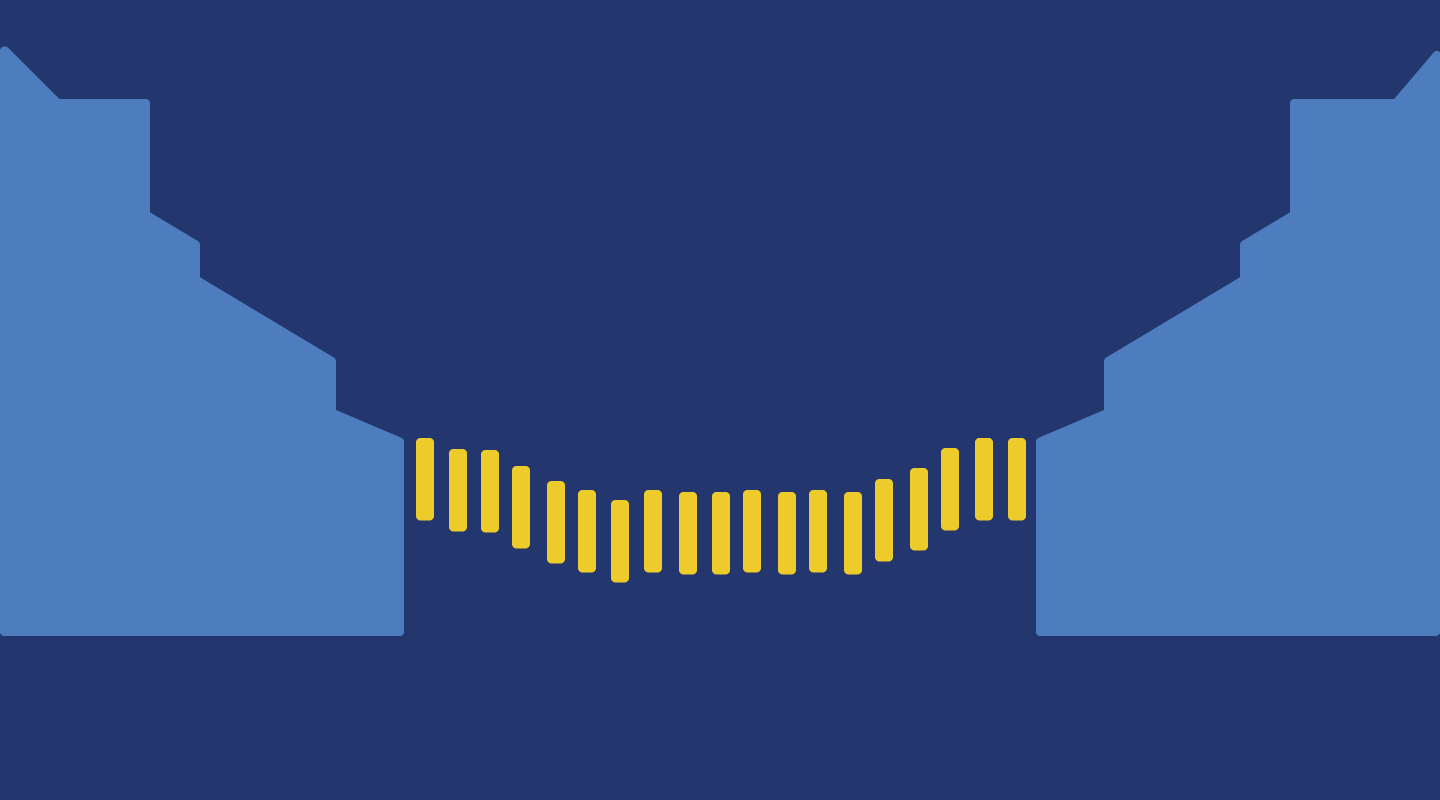
For those without it, closing the digital divide has never been more urgent. Internet access should not be a luxury, and it can no longer be neglected.
As more people shifted their lives online, it was initially unclear if the Internet could withstand the increased demand. The answer was a resounding yes. It allowed people to be more resilient to the social and economic shocks of the pandemic.
The Internet remained reliable while our world became increasingly unpredictable.
The Internet’s resilience is a reflection of the people who developed it and who work to strengthen it and keep it growing.
Chapters, individual and organization members, partners, communities of interest, and staff around the world worked together to meet challenges and overcome obstacles with energy, vision, and determination.
Our annual Impact Report tracks our work by actions and impacts, organized by major shifts in the way people used the Internet compared to years prior. While the projects we highlight in the 2020 report touch on particular successes, they represent only a fraction of our activities.
Surge in Internet Usage
U.S. & EU Broadband Consumption
tbps World-Record Data Consumption
Globally, lockdowns caused Internet use to surge up to 70% by one accountMark Beech, “COVID-19 Pushes Up Internet Use 70% And Streaming More Than 12%, First Figures Reveal”
FORBES, 25 MAR 2020,
https://www.forbes.com/sites/markbeech/2020/03/25/covid-19-pushes-up-internet-use-70-streaming-more-than-12-first-figures-reveal/?sh=2ef2fbe83104 . In the U.S. and Europe, first quarter average subscriber usage dataBroadband
Insights Report (OVBI)
OPENVAULT, Q1 2020, https://openvault.com/wp-content/uploads/2020/05/Openvault_Q120_DataUsage_FINAL.pdf revealed that broadband consumption increased 47%, from 273.5 GB in 2019 to 402.5 GB in 2020. The Deutsche Commercial Internet Exchange (DE-CIX) in Frankfurt even set a new world recordDE-CIX sets a new world record: More than 9 Terabits per second data throughput at Frankfurt Internet Exchange
DE-CIX website, 11 MAR 2020,
https://www.de-cix.net/en/about-de-cix/media-center/press-releases/de-cix-sets-a-new-world-record for data consumption in March, hitting more than 9.1 Terabits per second.
With Internet resilience thrust into the spotlight like never before, these usage spikes pushed providers to enhance their networks in order to minimize connection and speed hiccups. With the African Union Commission (AUC) and African Telecommunications Union (ATU), the Internet Society organized a series of seven seminars on African Internet resiliencehttps://www.internetsociety.org/events/african-internet-resilience/ to keep networks up and strong. Participants explored solutions ranging from shared spectrum strategieshttps://www.internetsociety.org/events/african-internet-resilience/shared-spectrum-strategies-to-increase-affordable-access-in-rural-areas/ to complementary access modelshttps://www.internetsociety.org/events/african-internet-resilience/what-about-complimentary-access-models/ to fiberoptic backbone infrastructurehttps://www.internetsociety.org/events/african-internet-resilience/the-role-of-fibre-optic-backbone-infrastructure-in-affordable-access/ .
HOW DID INTERNET FARE?
A record number of people were online in 2020.
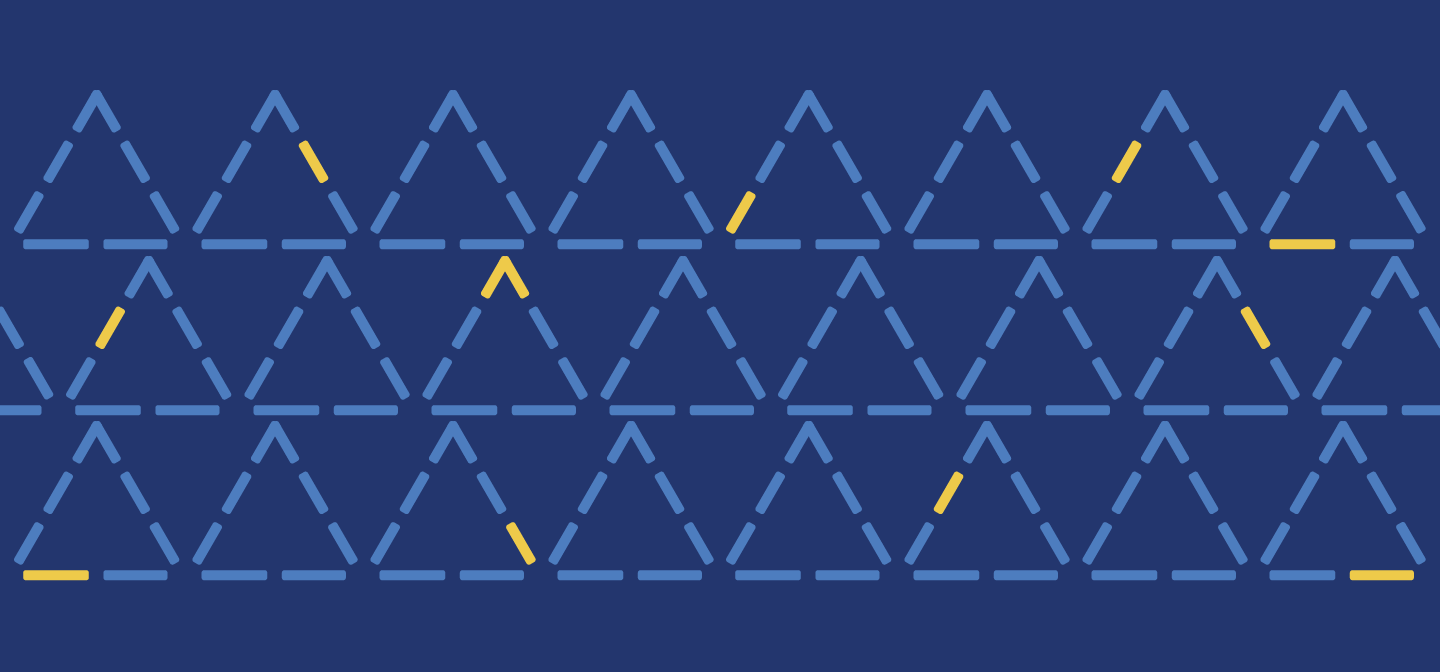
While Internet usage was up, the number of routing incidents reported worldwide dropped – from more than 5,000 in 2017 to fewer than 4,000 at the end of 2020.
Participant Growth
Countries
Workshops
Network Operators Trained
PARTICIPATION IN MUTUALLY AGREED NORMS FOR ROUTING SECURITY (MANRS) GREW OVER THE YEAR, DOUBLING ITS REACH FROM 317 TO 588 PARTICIPANTS FROM OVER 60 COUNTRIES.
MANRS launched Ambassadorhttps://www.manrs.org/ambassadors-program/ and Fellowshiphttps://www.manrs.org/ambassadors-program/fellows/ programs, bringing together 17 seasoned practitioners. They jointly organized 58 workshops and engaged over 1,400 network operators around the world. Seventy-five Internet Society chapters took part in a global training workshop in March, after which the UbuntuNet Alliance partnered with Internet Society to subsequently train 18 network engineers“NREN engineers hail MANRS training workshop”,
UBUNTUNET ALLIANCE, 1 SEP 2020, https://ubuntunet.net/2020/09/nren-engineers-hail-manrs-training-workshop/ from national research and education networks (NRENs) in eight African countries in July.
In addition, Akamai, Amazon Web Services, Azion, Cloudflare, Facebook, Google, Microsoft, Netflix, and other Internet leaders are now working together to secure large portions of cloud infrastructure – thanks to the new MANRS program for content delivery networks and cloud providershttps://www.internetsociety.org/news/press-releases/2020/leading-cdn-and-cloud-providers-join-manrs-to-improve-routing-security/ .
Internet exchange points (IXPs) keep traffic local and improve network resiliency.
We supported IXPs with technical expertise, training, and equipment in 26 countries, including 12 in Africa, 3 in Asia-Pacific, 2 in Europe, 8 in Latin America and the Caribbean, and 1 in North America.
We trained more than 600 individuals and organized 20 virtual meetings with peering, network operator, and NREN communities with our partners. We also teamed up with the Asia Pacific Internet Exchange Association (APIX) to study the impact of COVID-19 on IXP operations in 12 countries across the regionhttps://www.internetsociety.org/blog/2020/07/ixps-keeping-local-infrastructure-resilient-during-covid-19/.
Countries Supported
Individuals Trained
Virtual Community Meetings
Countries Studied for Impact of COVID-19 on IXP Operations
IMPACT SPOTLIGHT
New IXP gains momentum in Guatemala
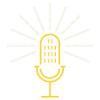
“The IXP.GT is the best thing that happened to us in 2020! Since we connected in August, we’ve doubled [or tripled] the average bandwidth,” says Ariel Tello, engineer and Project Manager at Señal Nacional, Guatemala’s third-largest residential Internet service-provider (ISP) and one of 10 organizations connected to IXP.GT.
He says connecting to IXP.GT has reduced their payments to international suppliers by at least 15%, allowing them to lower prices and improve capacity. In July, a 1 Mbps monthly download plan ran 149 quetzales (US$19). Now, customers pay that price for triple the download (3 Mbps). If costs fall further, Tello says they’ll be able to invest in expanding to more places without Internet access.
A Facebook node is now being installed – the first Point of Presence in Central America – and connections are being negotiated with other content delivery networks, with help from the Internet Society and the Latin American and Caribbean Internet Exchange Association.
“Before the IXP, it took 30 to 40 milliseconds to receive content, but it takes 2 milliseconds or less now,” explains Marco Antonio To, engineer, professor and IXP.GT President. IXP.GT also enhances security by keeping sensitive data within the country.
IXP.GT also makes participants less vulnerable to natural disasters, says To. Severe hurricane-related flooding in December damaged several international fiber-optic cables, causing delays for non-IXP operators.
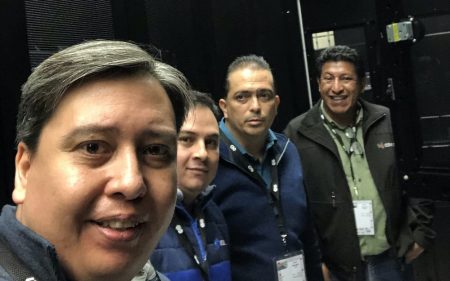
Marco Antonio To (IXP.GT President) – Julio Ramírez (Intertelco) – Iván Morales (IXP.GT Technical Director) – Ervin Jiménez (Comnet)
Organizations Connected
Times Average Bandwidth
Decrease in Payments to International Suppliers
Decrease in Speed to Receive Content
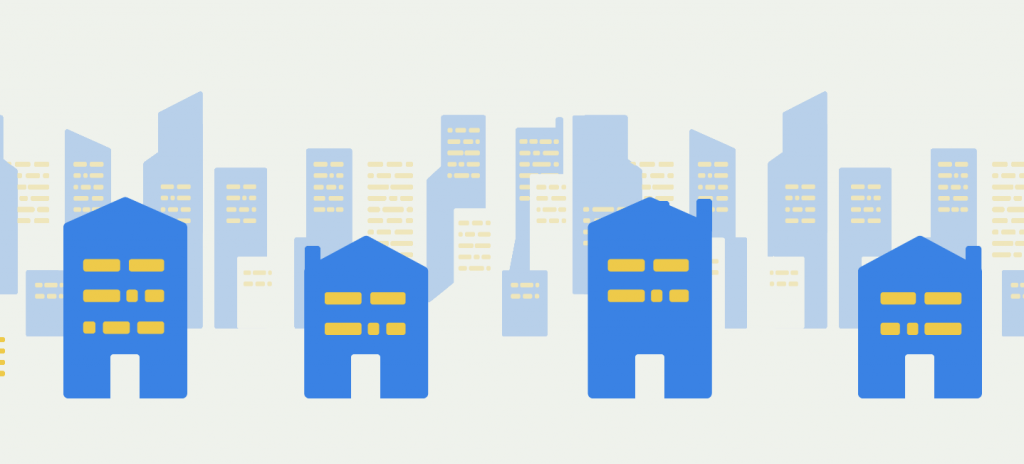
Business not as usual
With numerous stores, banks, and government offices closed during the pandemic, many people shifted to paying bills, collecting benefits, and shopping online. As a result, the first half of 2020 saw an increase in e-commerce equivalent to that of the previous 10 years“The next normal arrives: Trends that will define 2021—and beyond”,
MCKINSEY & COMPANY, 4 JAN 2021, ACCESSED 3 FEB 2021, https://www.mckinsey.com/featured-insights/leadership/the-next-normal-arrives-trends-that-will-define-2021-and-beyond. An UNCTAD survey of nine countries“COVID-19 has changed online shopping forever, survey shows “,
UNCTAD, 8 OCT 2020, https://unctad.org/news/covid-19-has-changed-online-shopping-forever-survey-shows found more than half of respondents now shop online more frequently, and a survey in Brazil“Painel TIC COVID-19, 1ª Edição”,
CETIC.BR, ACCESSED 3 FEB 2021, https://cetic.br/pt/tics/tic-covid-19/painel-covid-19/1-edicao/C6W/ revealed that 54% of people were paying bills or taxes online and 71% were banking or doing financial transfers online.
As the months dragged on, the Great Work-from-Home Experiment became reality. With many workplaces closed, half of the workforce or more was working from home – one global survey found that 45% of respondents worked from home in 2020, while another found that 47% of businesses would allow their employees to work remotely full-time, moving forward, and 82% would allow it at least some of the time. With so many people working and transacting online, the need for online privacy and security has become even more critical.
Spain was among the first countries to be devastated by COVID-19. Amid lockdowns, people suddenly had to adapt to working, buying groceries and paying bills online. For many seniors and small businesses in particular, the learning curve was steep. To help them navigate the transition, 67-year-old retired IT veteran Paulino Moreno, delivers workshops and seminars for Cibervoluntarios (Cyber-volunteers), a Spanish non-profit and Internet Society organization member that provides international technology training and awareness-raising. Moreno was among the 85 participants in an encryption webinarhttps://youtu.be/nADsFZl1bMY delivered jointly by Internet Society and Cibervoluntarios in May 2020, their first joint activity since partnering in 2019. “The way they explained how to transmit data and documents safely has been useful to me, especially the six-point recommendations from the Internet Societyhttps://www.internetsociety.org/encryption/protect-encryption-protect-yourself/ on how to keep your communications safe,” explains Moreno. He has since incorporated these tips into at least six of his own talks and workshops for audiences ranging from seniors to young entrepreneurs.
Cibervoluntarios, an Internet Society organization member, has also joined the Global Encryption Coalition (GEC https://www.globalencryption.org/) which was launched in May in an effort to challenge laws and proposals that could weaken encryption. Led by a Steering Committee composed of the Internet Society, the Center for Democracy and Technology, and Global Partners Digital, the GEC has grown from 30 members to a diverse array of more than 100 like-minded organizations. The GEC has already made gains in promoting and defending encryption. In November, a group of 50 expert members of the Coalition issued a technical report analyzing and debunking a leaked European Commission document, which analyzed different ways to spot illegal content in encrypted private communications. The Coalition also engaged in lobbying and issued a joint statementhttps://www.globalencryption.org/2020/10/cdt-gpd-and-internet-society-reject-time-worn-argument-for-encryption-backdoors/ after the “Five-Eyes” intelligence alliance, plus India and Japan, called on companies to create backdoor access for law enforcement to their encrypted devices and services.
While governments and law enforcement agencies continued to call for backdoor access to encrypted communications, we issued policy recommendations https://www.internetsociety.org/covid19-policy-recommendations/ urging lawmakers and network operators to protect the trustworthiness of the Internet.
The recommendations called for policies and regulations to support the use of end-to- end encryption. Our encryption work intensified in 2020 with global advocacy, regional messaging consultations, and global encryption training https://www.internetsociety.org/blog/2020/09/chapter-leaders-worldwide-make-the-case-for-strong-encryption/ for 139 participants from 66 chapters. Training participants went on to engage in advocacy or organize their own local sessions, including in Ghana and Nicaragua.
Internet Society chapters also responded with tenacity and innovation to the turmoil of 2020, creating initiatives to help see their communities through times of crisis and recovery.
One of the three winning Chapterthon projects in 2020 Chapterthon is an opportunity for Internet Society chapters to engage with their members to create projects around a central theme.
https://www.internetsociety.org/grants/chapterthon/2020/
https://www.internetsociety.org/grants/chapterthon/2020/projects/ focused on making sure people could use the Internet productively and securely. The Haiti Chapter developed the Smart Mom 2020 program https://www.youtube.com/watch?v=_zE5E7awrhA, training 20 mothers to use online banking or mobile money accounts.
The Bangladesh Chapter hosted a workshop for journalists working from home https://youtu.be/TQoa5fzfoEc at a time when most were using personal devices to publish news, leaving them prone to cyber attacks and disinformation. And the Saint Vincent and the Grenadines Chapter produced a tutorial on automating small businesses’ booking services https://youtu.be/c96Q18riufI, with tips to help small businesses enhance their efficiency by using free digital tools.
The Internet Society hosted a series of virtual trainings which over 70 chapter representatives attended to learn how to improve the overall security and availability of their websites and web servers. As a result of the training, many chapters significantly increased their websites’ compliance with open, secure standards. “After the training session, our chapter made several changes,” says Kolkata India Chapter participant Rittika Ratawa. Indeed, the Kolkata Chapter took its website from 32% compliance to an impressive 100% https://www.internetsociety.org/blog/2020/07/open-standards-everywhere-how-the-kolkata-chapter-got-a-perfect-score/.
CASE STUDY
Strengthening the Internet so it remains a force for good.
Students and journalists secure their online communications after encryption training.

Loretta Odame, a 28-year-old student at the Ghana Institute of Journalism, previously used social media without much thought about security or privacy. But after taking an Internet Society-sponsored workshop on encryption, organized by one of her professors, she has since made “a complete change” in the information she shares online and how she uses social media.
“The program helped us see the reasons why encryption matters, because it protects our privacy. That has given us an awareness that there are certain things that we used to do and are not doing anymore. And we are aware of the need to secure our data.”
The workshop content largely replicated the Internet Society’s encryption training course, which was delivered to more than 90 chapter representatives around the world in May. One of the participants in that training was 26-year-old Theorose Elikplim Dzineku, Chair of Programs and Communications for Internet Society Ghana.
Dzineku, who regularly teaches a second-year new media class to 120 students at the Ghana Institute of Journalism, went on to write a research paper examining how Ghanaian journalists understand encryption and apply it to their work. The topic was timely as the pandemic had forced many to use online means of communicating with sources,
and misinformation was rife. She was surprised to learn that most working journalists had no knowledge of encryption.
She put together a proposal and won a $3,000 small grant from the Internet Society Foundation to implement an encryption workshop at the Ministry of Communications.
“I really wanted to use the knowledge that I gained to make a change. I didn’t just want to be part of the numbers who do a training and just go home with a certificate without doing anything,” she says.
Vincent Amedzake is a 24-year-old freelance journalist who attended one of Dzineku’s encryption workshops.
“Before the workshop, we exchanged messages and information using mediums that we didn’t know weren’t secure,” he says, adding that he now relies on basic encryption techniques he learned in the workshop. He’s also changed the way he uses social media and now uses password-secured public WiFi connections.
“One very valid and important thing we learned was that protection is key – encryption is key,” he says.
Education in a pandemic
Amid the global wave of pandemic lockdowns, there was an unprecedented rise in e-learning. As of 1 April, nearly 1.5 billion children in 173 countries“Global monitoring of school closures caused by Coronavirus (Covid-19),”
UNESCO [see interactive map data for 1 April 2020], ACCESSED 2 APR 2021, https://en.unesco.org/covid19/educationresponse were affected by school closures. In China, the largest “online movement” in the history of educationCathy Li and Farah Lalani, “The COVID-19 pandemic has changed education forever. This is how,”
WORLD ECONOMIC FORUM, 29 APR 2020, https://www.weforum.org/agenda/2020/04/coronavirus-education-global-covid19-online-digital-learning/ occurred in mid-February after the government instructed a quarter of a billion full-time students to resume their studies online.
Having students of all ages studying, submitting homework, and videoconferencing with teachers and classmates online has heightened awareness of the need for safe communications.
The pandemic ushered in a pressing need to improve the digital literacy of children, teachers, and parents. To address these needs, we hosted a Kids, the Internet, and COVID-19https://www.internetsociety.org/events/kids-the-internet-covid-19-how-to-keep-our-children-safe-online/ webinar to show parents how they can protect their children’s privacy and security online via encryption. The video of the webinar was viewed nearly 3 million times, setting a record for the Internet Society as the most viewed video content.
Further, the original webinar content was replicated by members of the community, including our Japan Chapter which translated the English version into Japanese.
Internet Society chapters devised a number of education-focused projects to keep kids learning and teachers educating online – and to ensure this happened safely and effectively. The Chapter in the Democratic Republic of Congo prepared a video guide to help teachers use Zoomhttps://youtu.be/fwCv1Om9PYI. The Sri Lanka Chapter developed a blueprint for a catalogue of online educational resources to help school teachers use online toolshttps://youtu.be/3ohnlal4mtI and catch up on missing lessons. In Trinidad and Tobago, the Chapter developed a crowdsourcing project to build a repository of shared teaching resourceshttps://youtu.be/fUtRIkMkX9E, help teachers access online training, and find other experts. And to empower educators to safely navigate online teaching amid the pandemic, the Uganda Chapter delivered a training on digital safety for 50 educators from 38 schoolshttps://youtu.be/nztoCfYQ9w8.
Since most schools weren’t closed for the entire year, ensuring connectivity was also a continued priority. To help, the Armenia Chapter provided computers, WiFi connections, and training for rural art schools and librarieshttps://youtu.be/gDd8qsd3-ps, while the Gambia Chapter refurbished and networked computer labs and donated computers to three schools“Internet Society Gambia Chapter- ISOC Gambia Chapterthon 2020 project, in Partnership with MCJSupport Org”,
MCJSUPPORT ORGANIZATION,
https://mcjsupport.org/2021/02/16/internet-society-gambia-chapter-isoc-gambia-chapterthon-2020-project-in-partnership-with-mcjsupport-org/ for children with disabilities.
IMPACT SPOTLIGHT
Helping students continue their education amid twin crises in Yemen
More than 150 elementary and high-school students at five different public schools in war-ravaged and pandemic-ridden Yemen now know how to use the Internet safely and effectively to learn.

This was the result of Chapterthon-winning training sessions organized by the Yemen Chapter: Reinforcing digital awareness in Yemeni schoolshttps://youtu.be/yTvQJwAS2-Q. The lessons focused on digital security, privacy, online search techniques, and free e-learning tools such as Zoom and Google Classroom.
When one in five schools in Yemen can no longer be used as a direct result of conflict “As school year starts in Yemen, 2 million children are out of school and another 3.7 million are at risk of dropping out”,
UNICEF, SEP 2019,
https://www.unicef.org/press-releases/school-year-starts-yemen-2-million-children-are-out-school-and-another-37-million, the Internet is enabling students to continue their education remotely when they can’t physically attend school.
The training sessions have also faced obstacles. They’ve had to be planned around ceasefires or rescheduled due to the eruption of violence. Another challenge was convincing school principals and directors that e-learning training was needed.
“Lots of people have Internet access through mobile phones, tablets, and laptops. There is a big gap in knowledge between parents and their children, as well as teachers,” says Internet Society Yemen Chapter President Sharaf Azzain. “When we realized that the teachers were interested and needed training as well, we included them.”
After the first Chapterthon project, undertaken in the capital of Sanaa, Azzain says the project team went on to organize a similar project in the opposition-recognized capital of Aden. There, four trainers reached more than 120 students and 20 teachers at four schools, providing training on computer literacy and safe Internet use.
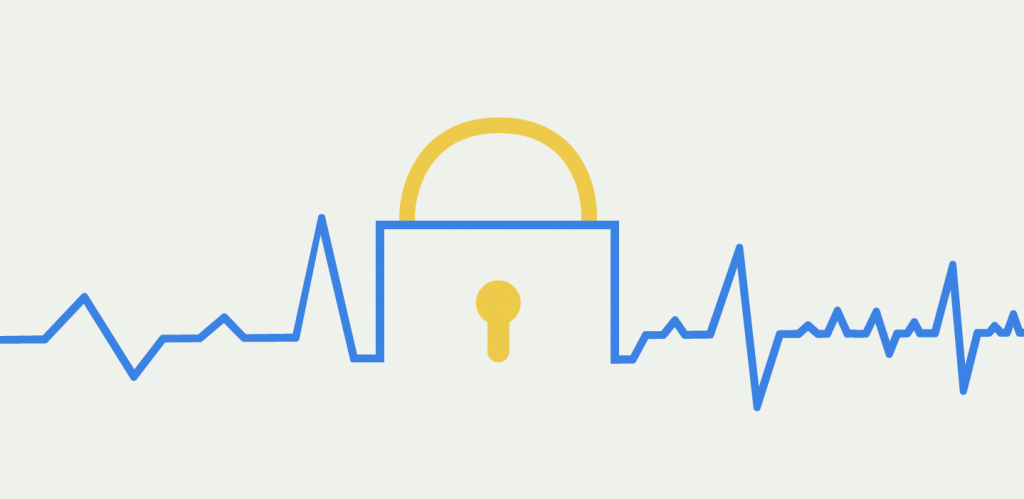
Keeping healthcare secure
Increase of “Ping An Good Doctor” app users in China
Increase of demand for telehealth services in US
At a time when COVID-19 information was crucial, there was substantial growth in telemedicine. Additionally, doctors’ inability to see patients face-to-face catapulted online video consults to record-setting figures. The number of new users on a Chinese healthcare app rose nearly 900% in January 2020 compared to December 2019Vikram Kapur and Alex Boulton, “Covid-19 Accelerates the Adoption of Telemedicine in Asia-Pacific Countries,”
BAIN & COMPANY. APR 2020,
https://www.bain.com/insights/covid-19-accelerates-the-adoption-of-telemedicine-in-asia-pacific-countries/, and visits to a Singaporean telemedicine platform rose more than 160% from the beginning of 2020. A May report showed demand for telehealth services would grow 64.3% in the US in 2020 aloneMike Miliard, “Telehealth set for ‘tsunami of growth,’ says Frost & Sullivan,”
HEALTHCARE IT NEWS, MAY 2020, https://www.healthcareitnews.com/news/telehealth-set-tsunami-growth-says-frost-sullivan – and a staggering seven-fold increase was predicted by 2025. Meanwhile, COVID-19 contact-tracing, testing, vaccine development, and vaccination scheduling were all made easier thanks to the Internet.
But people need to know how to use and benefit from these new health apps and services. And with so many people using telehealth, confidential health records must stay private and secure.
The Internet Society, the Center for Democracy and Technology, and Global Partners Digital hosted a webinar series with leading security and technology experts that explored topics like Health, Encryption, and COVID-19: Keeping people and countries safer onlinehttps://www.internetsociety.org/events/health-encryption-covid-19/. Another focused on Health, the Internet and COVID-19: Government backdoor access proposals that threaten Canadian health and security onlinehttps://livestream.com/accounts/686369/events/9128375/videos/206047873/player?width=640&height=360&enableInfo=false&defaultDrawer=&autoPlay=false&mute=false.
In addition, the Internet Society’s webinar in the African Internet resilience series explored digital health services and solutions for the medical industry during the pandemichttps://www.internetsociety.org/events/african-internet-resilience/digital-solution-for-health-services-and-the-medical-industry-during-the-covid-19-pandemic/.
Chapters championed health-related projects. In Guinea, they provided community healthcare centers with an Internet connection, an interactive web platform, and messaging services to facilitate interactions between patients and health entitieshttps://youtu.be/3fdzMsKJauY. In Somalia, efforts focused on educating and informing the community about privacy, online security, and getting reliable health informationhttps://youtu.be/ajtsrev02T8. Meanwhile, the Togo Chapter’s DokitaEyes community digital school projecthttps://youtu.be/N84eTrNJnoM trained community health workers on digital tools to help implement the “Health of Mothers and Children of Togo” project.
IMPACT SPOTLIGHT
How a remote rural town prepared for a pandemic and improved its connectivity
Imagine facing COVID-19 without the Internet. That could have been the reality in El Cuy, a remote town in southern Argentina, had the Internet Society not helped deploy its community network in 2019. Its impact was magnified in 2020.

Maria Goicochea, Director of the El Cuy Hospital, says being connected has allowed doctors to do online consults with specialists, get statistical reports, send urgent patient or administrative records, and find suppliers. They can also access training and Ministry of Health teleconferences. She says without the Internet, COVID-19’s impact would have been unthinkable. “We would have been disarmed, stressed, and helpless!”
Nearly half of El Cuy’s population is over the age of 60 – a high-risk group. People used to have to travel 130 km to a nearby city to get medical prescriptions approved. This is now done online, eliminating long, risky, and costly travel.
The network initially used a 10 Mbps connection borrowed from an Internet Exchange Point (IXP) 200 km away, and the increased traffic amid lockdowns made the connection slow and patchy. In May, the Internet Society published a blog by Nelso Rodríguez, a nurse at the hospital and one of the network’s founders, where he called for more capacity, and placed an article about El Cuy’s network“Cuando una conexión a Internet es el único lazo al mundo en cuarentena: el caso de El Cuy, en Río Negro “,
LA NACION, MAY 2020,
https://www.lanacion.com.ar/tecnologia/cuando-conexion-internet-es-unico-lazo-al-nid2363234/ in an important Argentine newspaper – La Nación. Soon after, a local Internet service provider upped El Cuy’s backhaul through the IXP by 50% and expanded the number of connections.
For Rodríguez, empowerment has been the greatest impact. “We realized that we could accomplish things and organize our community around a common good,” he said.

Mobilizing—at a safe distance
Being able to raise our voices is a human right and a cornerstone of democracy. But at a time of restricted movement, typical ways of organizing and mobilizing for change have had to adjust.
STAYING HOME HASN’T MEANT STAYING SILENT.
The boom in Internet-based advocacy was accelerated in 2020. U.S. citizens used digital advocacy to engage with all levels of government, undertaking eight times more digital actions in the first half of 2020 than in the last presidential election year in 2016“State of Advocacy 2020: The year of Digital Advocacy,” PHONE2ACTION,
ACCESSED 24 FEB 2021,
https://phone2action.com/state-of-advocacy-2020/. In a Gallup pollAbby Kiesa, “Lack of Voting Information Could Hamper Youth Turnout,” GALLUP
14 JUL 2020,
https://news.gallup.com/poll/315761/lack-voting-information-hamper-youth-turnout.aspx, 79% of young people said “the coronavirus pandemic has helped them realize how much political leaders’ decisions impact their lives.” And with the #BlackLivesMatter movement gaining broad public supportNate Cohn and Kevin Quealy, “How Public Opinion Has Moved on Black Lives Matter”,
NEW YORK TIMES, 10 JUNE 2020,
https://www.nytimes.com/interactive/2020/06/10/upshot/black-lives-matter-attitudes.html globally, a Pew Research surveyBrooke Auxier, “Americans’ activism on social media differs by race, age, party,”
PEW RESEARCH CENTER, 13 JUL 2020,
https://www.pewresearch.org/fact-tank/2020/07/13/activism-on-social-media-varies-by-race-and-ethnicity-age-political-party/ in the U.S. in June found that 54% of social media users aged 18-29 reported using social media to look for information about rallies or protests in their area.
times more digital action than in last U.S. presidential election
of young people realized impact of political leaders’ decisions
of young adult social media users use social platforms to find local rally/protest information
With activities moving online amid the pandemic, the Internet has become more crucial to awareness-raising and advocacy – and advocates’ data and communications must be kept safe and private.
This is even more urgent for marginalized communities and professional advocates, such as journalists, who need to be safe online in order to exercise their rights, engage in advocacy, and hold governments and institutions accountable. We produced factsheets on encryption for LGBTQ+ communitieshttps://www.internetsociety.org/resources/doc/2019/encryption-factsheet-essential-for-lgbtq-community/ and how encryption can protect journalists and the free presshttps://www.internetsociety.org/resources/doc/2020/fact-sheet-how-encryption-can-protect-journalists-and-the-free-press/ so that more people can securely tell their impactful stories.
In 2020, the Internet Society launched two critical resources to support policy and advocacy.
Internet Society Pulsehttps://pulse.internetsociety.org/, launched in December 2020, provides deeper, data-driven insights into the Internet. The platform includes data about the health, availability, and evolution of the Internet, including Internet shutdowns and the deployment of key technologies that enable the Internet’s scalability and security. Policymakers, researchers, journalists, network operators, and civil society groups can gain insights and context to better inform stories, research, and policies – and advocate for undisrupted Internet access.
As the first organization to officially call for an Impact Assessment and work to integrate it into regulatory processes, the Internet Society developed the Internet Impact Assessment Toolkithttps://www.internetsociety.org/issues/internet-way-of-networking/internet-impact-assessment-toolkit/ (IIAT). The IIAT assesses the potential effects of emerging policy and technical proposals on critical properties of the Internet . Over time, the IIAT will strengthen accountability in the regulatory process by enabling policymakers and technologists to make more informed, conscious decisions about how to keep the Internet healthy.
CASE STUDY
Growing the Internet so everyone can benefit from it
A Harlem community news streaming project empowers advocacy, while serving as a virtual lifeline amid the pandemic.

Across the United States, communities were shaken by the homicide of George Floyd“George Floyd death: Violence erupts on sixth day of protests
“,
BBC NEWS, 1 JUN 2020,
https://www.bbc.com/news/world-us-canada-52872401 by a police officer in Minneapolis, Minnesota, in May. A smartphone recording of the event went viral, triggering worldwide protests“How George Floyd Was Killed in Police Custody
“,
THE NEW YORK TIMES, 31 MAY 2020,
https://www.nytimes.com/2020/05/31/us/george-floyd-investigation.html against racism and police brutality and reigniting the Black Lives Matter movement.
In the past, the Black community’s lack of access to media made advocacy difficult. It’s one of the reasons the Internet Society’s New York Chapter applied for an Internet Society Foundation granthttps://www.isocfoundation.org/2019/12/internet-society-foundation-announces-300000-in-grants/ for a Streaming Station Community News Project in Harlem. According to Stuart Reid, a community technologist and board member of the New York Chapter, roughly two-thirds of residents are Black and nearly a third are Latino. Half are unemployed and half live below the poverty line. The chapter won a $30,000 grant to help underserved communities produce and stream programs for and about their community.
Pivoting during the pandemic
Weeks into the project, COVID-19 hit, so the project was adaptedhttps://www.isocfoundation.org/story/in-coronavirus-hit-harlem-community-streaming-gives-residents-a-virtual-lifeline/ by shifting from physical studio settings to online applications like Zoom, Facebook Live, YouTube, and various websites, such as www.safensmart.orghttps://www.safensmart.org/, to host the community-produced content. News broadcasts, discussions, and motivational shows kept local residents informed about everything from health and safety precautions to local food distribution.
According to Polly Spain, President of the Federal 8 Housing Group, this information has “made a world of difference – it’s been a matter of life and death, really! … We set up access to food, figured out who needed health services…and lawyers, because many people are facing eviction after losing their jobs…. It’s truly been a lifeline.”
The Wisdom Table, co-hosted by Brother Leroy, produced by and for senior citizens, invited a cavalcade of doctors to speak about COVID-19 prevention. Viewers could ask questions of medical providers online.
“Everyone was scared because we’re in the epicenter,” says project manager and Digital Divide Partners co-Chair Doug Frazier.
“Once we got all these doctors on, it helped calm people down. At the time, you couldn’t see a doctor, and you couldn’t go to the emergency room if you didn’t have COVID… so being able to talk to a doctor was worth its weight in gold.”
These shows also debunk misinformation, while dealing with angles not covered by mainstream media, such as how the East Harlem zip code was the hardest-hit by COVID-19 in Manhattan. They’ve also covered the Black Lives Matter movement, with shows like Community & Technology discussing racial equity, policing, corporate sponsorship, and a universal basic income.
“It’s been electricity in terms of the engagement and enthusiasm,” says Brother Leroy, adding that having the community tell its own stories makes the project “a game changer.”
The New York Chapter also engaged in advocacy of its own, issuing a public statementhttp://lists.isoc-ny.org/pipermail/announce-isoc-ny.org/2020/000795.html in response to the George Floyd killing.
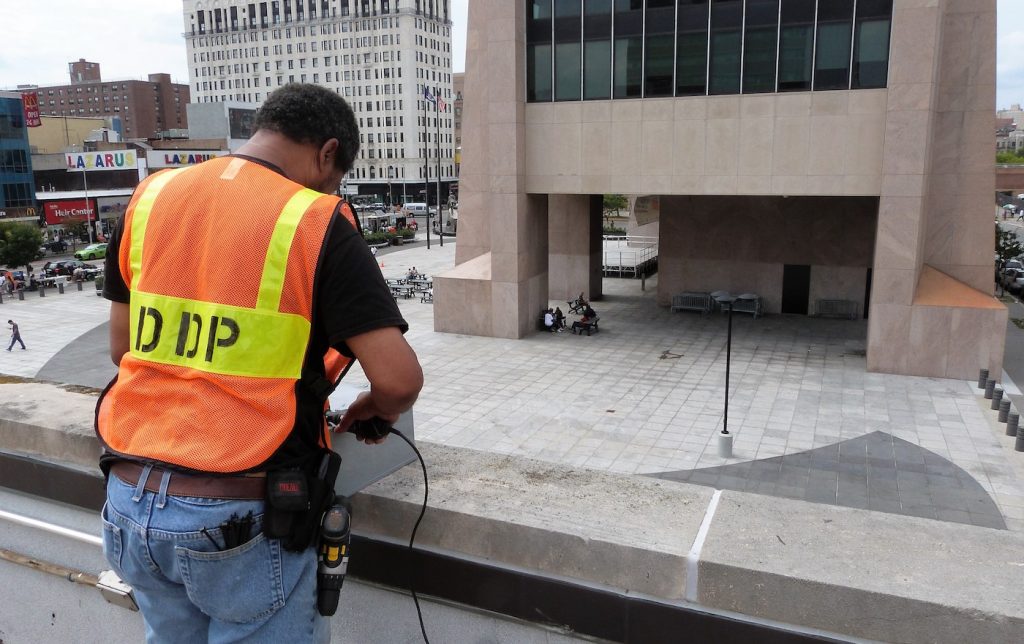
Expanding community networks
Up to one in three Harlem householdsHousehold Internet Access
,
KEEPING TRACK ONLINE,
https://data.cccnewyork.org/data/map/1325/household-internet-access#1325/a/3/1547/62/a/a do not have home Internet access – either via computer or mobile phone. Among low-income households, only half are connected.
Under a previous project by Digital Divide Partnershttps://www.digitaldividepartners.org/, the Y-Fi Community Network was established, with 500 nodes across New York City. The recent Internet Society Foundation grant helped to expand its coverage by 25 nodes. As a result, more than 75,000 public housing residents can now watch community-produced programming, many of them using the Y-Fi in 10 public housing developments in Harlem and South Bronx.
“We don’t think people should pay a private operator to get Internet access, be safe or to get educated,” says Frazier. “So, we built something so that people could be informed and help and empower themselves. The residents help build the network so you build their skills in the process, and then hopefully get jobs to keep maintaining the network.”
For all the ways the Internet was a lifeline amid the pandemic, the reality is that less than half of the world’s population had access to this lifeline in 2020.
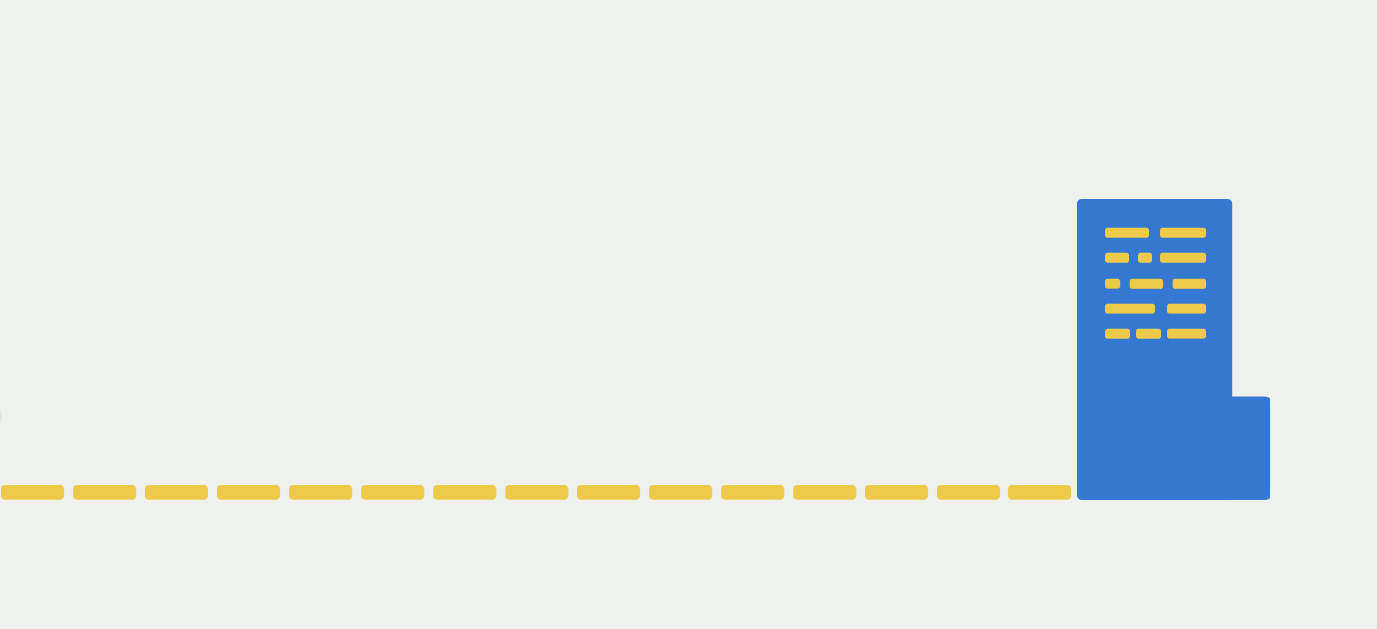
Connecting the unconnected
Completing schoolwork on a cellphone
Unable to do schoolwork because of no at-home computer
Worried about high-speed Internet bill payment
Further, there were gaping inequalities in access between, and within, developed and developing countries. According to a UNICEF-ITU report“Two thirds of the world’s school-age children have no internet access at home, new UNICEF-ITU report says,”
UNICEF, 30 NOV 2020,
https://www.unicef.org/press-releases/two-thirds-worlds-school-age-children-have-no-internet-access-home-new-unicef-itu, 63% of the world’s school-age children – 1.3 billion children aged 3 to 17 – have no Internet access at home. The gap is greatest in poor and rural households: fewer than 1 in 20 school-age children from low-income countries have Internet at home, compared with nearly 9 in 10 from high-income countries. Even in developed countries, connectivity is low among those with low incomes.
According to a Pew Research Center survey“53% of Americans Say the Internet Has Been Essential During the COVID-19 Outbreak”,
PEW RESEARCH CENTER, 30 APR 2020,
https://www.pewresearch.org/internet/2020/04/30/53-of-americans-say-the-internet-has-been-essential-during-the-covid-19-outbreak/ in the United States in April, 43% of lower-income parents with children whose schools were shut down said their kids would have to do schoolwork on their cellphones and 36% said their children would be unable to do schoolwork because they lacked access to a computer at home. Among those with Internet, 52% of lower-income broadband users said they worried about being able to pay for their high-speed Internet connection over the coming months.
Internet access is no longer optional.
When education, work, life-saving health information, and even medical attention have all shifted to digital platforms, connecting the unconnected is an urgent matter. The pandemic has laid bare the global failure in making “last mile” connectivity widely accessible and affordable.
To fill such gaps, in 2020, the Internet Society supported at least 25 new and existing community networks (CNs) around the world – in Argentina, Canada, the Galapagos Islands, Ethiopia, Georgia, Ghana, Greecehttps://www.internetsociety.org/blog/2021/03/sarantaporo-gr-community-network-tending-to-our-communities-needs-with-care-and-flexibility/, Italy, Mexico, Nigeria, South Africa, UgandaLatanya Tower Construction 2020
video,
BOSCO UGANDA,
https://youtu.be/D80kWubF2jw, Zimbabwe, and in the United States (New York Cityhttps://www.internetsociety.org/blog/2020/03/in-new-york-city-building-a-network-while-social-distancing/, Baltimore“Community school, tech groups join forces to set up free Wi-Fi network in Sandtown”,
BALTIMORE BUSINESS JOURNAL, 8 MAY 2020
https://www.bizjournals.com/baltimore/news/2020/05/08/community-school-tech-groups-join-forces-to-set-up.html, Seattle, and Hawaii).
The 2020 Chapterthon included several projects focused on providing Internet access to those who were offline, one of which was a community network in Salinas, Boliviahttps://youtu.be/9Uo_LU6CxwU. A project in Turkey developed and deployed a blockchain network in four different citieshttps://youtu.be/ewkJK1SzzKA with a goal to help non-government agencies communicate and manage their resources efficiently when responding to disasters. The South Africa Chapter’s Internet-In-A-Boxhttps://youtu.be/FJljDlPyuDk tutorial and the Panama Chapter’s manual for digital inclusionhttps://youtu.be/mueX5dGIeOA focused on Internet access through Raspberry Pi devices. The Panama Chapter also trained residents of Parara Puru, a local Indigenous community with no electricity, potable water, or Internet. “More than anything we need computers, electricity and technology, so our children can study,” said Brenio, one of the participants in the training.
We also improved know-how and helped CNs thrive through virtual meetings and expert advice exchange. Furthermore, we expanded the set of countries and intergovernmental organizations that recognize the value and support CNs.
More than 2,000 participants took part in the Community Network Exchange Asia-Pacific meeting, as well as a webinar to share Asian success storieshttps://www.internetsociety.org/blog/2020/07/how-community-networks-are-helping-during-covid-19/. As part of the 2020 Indigenous Connectivity Summithttps://www.internetsociety.org/events/indigenous-connectivity-summit/2020/, 80 people completed courses on Community Networkshttps://www.internetsociety.org/events/indigenous-connectivity-summit/2020/trainings/community-networks-webinar/ and Policy&Advocacyhttps://www.internetsociety.org/events/indigenous-connectivity-summit/2020/trainings/policy-advocacy-webinar/ and agreed to a set of policy recommendationshttps://www.internetsociety.org/resources/doc/2020/2020-ics-policy-recommendations/ that could make it easier for Indigenous communities to get connected on their own terms. The Summit on Community Networks in Africahttps://www.internetsociety.org/events/summit-community-networks-africa held three sessions in September-November; partner organizations conducted a series of webinars on CNs and access issues; and an interactive panel discussion on Building Community Networks in the Middle East and North Africa took place in December. In Latin America and the Caribbean, 295 people, including policymakers, took our “Building Wireless Community Networks” course, while our high-level webinar “Innovative Models to Connect the Unconnected” attracted 174 representatives from the Inter-American Telecommunications Commission from more than 20 countries.
Finally, we worked with governmental authorities to secure their support to CNs. At the local and regional levels, we partnered with key countries, such as Ethiopia, Uganda, Kenya, and Brazil, towards enabling regulatory environments. At the global level, we secured that the value of CNs was recognized in official outcomes of the ITU-D and the G20.
IMPACT SPOTLIGHT
Bringing Internet access to homes when public access became impossible

Before the pandemic began, most residents of the town of Murambinda, eastern Zimbabwe, accessed the Internet at the local Cybercafé, the main public access point for Africa’s first community network. Others could connect through Murambinda Works hotspots in schools, government offices, and the district health centre.
But as pandemic-related lockdowns, quarantines and restrictions began, many residents realized they could no longer connect from these public places.
This “caused a major outcry from communities who needed to keep in contact with their loved ones,” says Joseph Bishi, who was the technical lead during the Murambinda Works CN expansion and training projecthttps://www.internetsociety.org/blog/2018/12/murambinda-works-community-engagement-workshop/ sponsored by the Internet Society in 2018–2019. That project helped expand the community network along a 40-km radius, connecting four schools, a district referral hospital, some non-governmental organizations, and local government offices.
In 2020, with many residents unable to work and children unable to access e-learning, Bishi decided to approach the Internet Society to connect people from their homes.
He got a $10,000 grant, which enabled a mast with solar-powered systems to be installed in Murambinda from November through December. This has created residential hotspots that allow community residents to access public health education materials offline, through a platform developed in collaboration with TunapandaNET. Residents can access local content for free or the Internet for a fee.
“The support was of a great relief to us as a community ISP … to accommodate a new way of living for rural communities, so that you can work from home, attend church from home, and even [do] schooling,” says Bishi. “The availability of a community network in Murambinda has become the life hub of the community.”
Now, another platform allows students to access educational material through the school management system Murambinda Works developed in 2019. Students and teachers can experience a virtual classroom. Many children and teachers are already equipped for e-learning – a downwind impact of Internet Society’s earlier funding. Prior to the pandemic, at least 1,500 teachers out of 3,224 and over 400 health workers across the province had also been trained by Murambinda Works on basic ICT and computer literacy.
The school management system has also allowed district education inspectors to remotely access schools without the need for travel. Bishi says additional policy changes could be on the way that will benefit all underserved communities across the country.
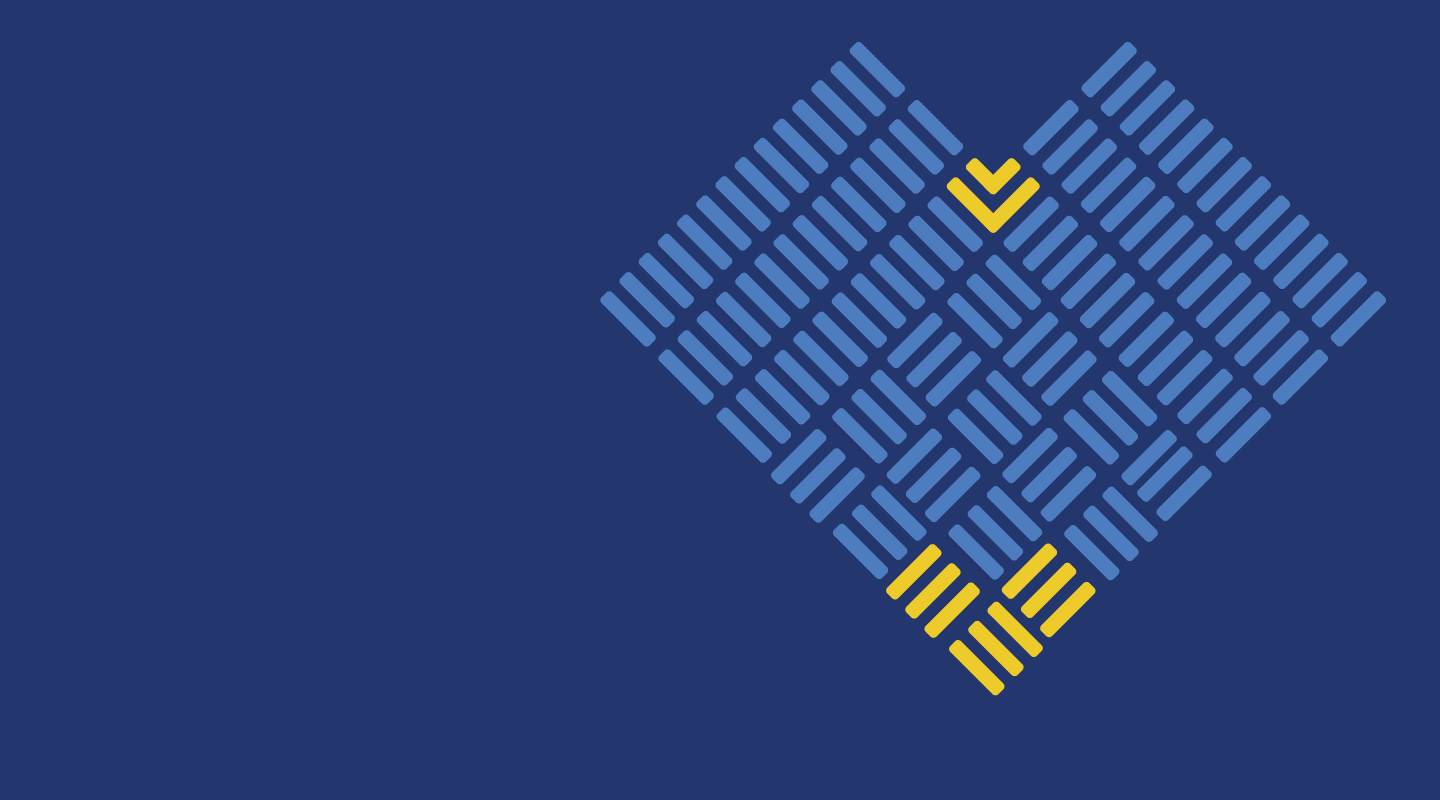
The Internet was a cornerstone of 2020.
The pandemic created unique, and often surprising, challenges to our work. But we kept up the momentum, even if it meant we had to sometimes adjust our expectations.
The myriad challenges of 2020 have underscored the creativity, expertise, and perseverance of the Internet Society community and staff in the face of adversity. They fueled solutions that helped the world navigate this time of global confusion, anxiety, and insecurity. This drive will help navigate the recovery, in 2021 and beyond.
And while the world understands more than ever how essential and how powerful the Internet can be, it still cannot replace face-to-face interaction. Rather, it plays an important supporting role for human interaction that shines through during crises, and can be a beacon on our path back to normal.
As we work to overcome the barriers of the digital divide by building better and stronger networks, more people will have the means to weather future storms. Connecting the unconnected is especially pressing, to ensure no one is left behind.
Our mission — to ensure an open, globally-connected, secure, and trustworthy Internet for all — is as challenging as ever. But 2020 has helped the world understand its importance, and urgency, more clearly than ever.
We can’t do it alone.
Join our growing global movement of people committed to creating a bigger and stronger Internet for everyone. Become a member. Attend an Internet Society event. Become a partner. Follow us on social media. Above all, learn more and engage in the conversations that will help create an open and trusted Internet for everyone.

